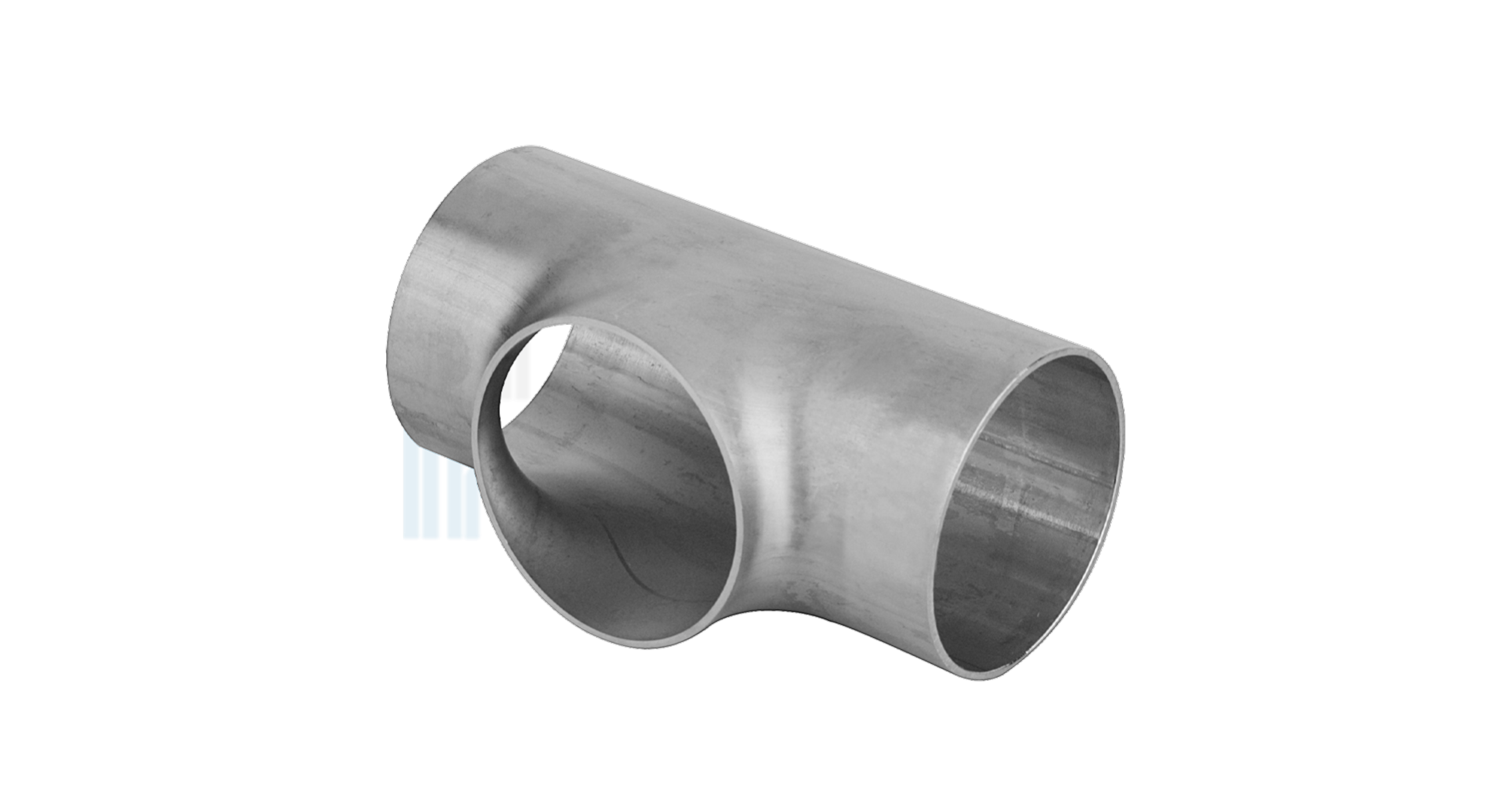Hydroforming, used for making tees, is a molding process that uses a hydraulic fluid to obtain structural, one-piece, robust, light and resistant components. Its main applications are:
- Components of the automotive sector: it is widely used for the construction of monocoque, chassis and other elements necessary for the construction of automobiles;
- Hydraulic sector: within this category there are the connection tees of the hydraulic systems.
What are the main stages of the hydroforming process?
The manufacturing process through hydroforming starts with the insertion of a tubular segment inside the press, in correspondence with the mold cavity. At this point, the press is closed and, through the side openings, water is inserted into the tube to be formed. When the filling is completed, the lateral cylinders move axially and pressurize the fluid which pushes the material to trace the shape of the mold cavity. At the end of the process, or after the time necessary to obtain a constant and stable shape, the component can be emptied of the fluid and can be extracted and directed, if necessary, to the subsequent processing phases.
The advantages of components obtained by hydroforming
The
tees, or the other components, obtained through the hydroforming process have some not negligible advantages for the construction of systems or assemblies of considerable size. In particular:
- Reduction of components for the realization of the same set: this advantage brings with it numerous benefits in terms of reduction of processing operations, time and total process costs;
- Weight reduction: the issue of lightening, especially in the automotive field, is increasingly important as the weight of vehicles is directly proportional to fuel consumption and the production of emissions. This feature is not only important from a production point of view, but also from an environmental point of view.
The most important parameters for the hydroforming process
For the correct realization of the parts through the hydroforming process, some production and material aspects are important:
- Formability of the material: it is necessary for the process to work properly and the piece, for example the tee, does not break during the application of pressure;
- Friction at the interface: the friction between the mold and the piece must be properly calibrated;
- Machine parameters: these include times, pressures and movements of the axial cylinders that must be set correctly for the effective and efficient production of the parts.
As briefly explained, this innovative forming technology represents a concrete possibility for the present but also a fundamental prospect for the future in order to meet the needs and limitations of modern industry.
The equipment and components of the hydroforming process of the tees
As seen previously, the tee hydroforming process brings with it important advantages that make this methodology an important alternative to the classic methods of producing these components. In addition to choosing the correct materials, the equipment is essential:
- The mold: which must have some particular characteristics in terms of geometry, surface finish, construction material and hardness and, lastly, the preheating temperature in operation;
- The press: it is essential to guarantee the correct force for the realization of the tees. The parameters to keep under control are the working speed, the production rate, the stiffness of the system, the accuracy of the shape obtained and the closing force.
The incorrect design of the mold or the choice of an unsuitable press for the part being produced can create more or less important problems in the production phase with an increase in waste or, in the most serious cases, the impossibility of produce the desired components: these phases therefore represent fundamental operations in the production chain.
In addition to these equipments, the following must also be taken into account:
- The characteristics of the piece: among which the physical, thermal and mechanical characteristics are important, which are functional both in the production phase and during the use of the tees;
- The mold-piece interface: considering the most suitable heat transfer and lubrication process can be fundamental to lengthen the life of the mold and improve the production of components;
- The deformation zone: understanding the stresses, temperatures and mechanisms that act in this zone helps to increase the efficiency of this process and improve the final properties of the product;
- The manufacturing facility: that is, the personnel dedicated to the process, the environmental analyses, compliance with the regulations in the field of Quality and the dedicated space within the company.
Thoroughly investigating each of these aspects is a central requirement for obtaining products that comply with current specifications and regulations.
The focus on the hydroforming mold
The mold, as anticipated, is central in the realization of the hydroforming process of the tees. The basic components of this equipment are:
- Upper part: composed of upper half-mold and upper plate;
- Lower part: composed of lower half-mould and lower plate;
- Centering on the press plates;
- Horizontal cylinder;
- Holding cylinder;
- Supports of the cylinders.
Each of these elements has a different function but is essential for the correct success of the production. Furthermore, each project presents specific critical issues that must be addressed in the field based on the one hand on the experience gained by the designer in collaboration with the company know-how, on the other hand on the individual specifications that can be provided by the customer or by international regulations in force in the matter.
